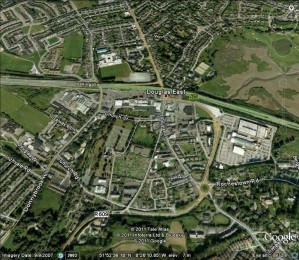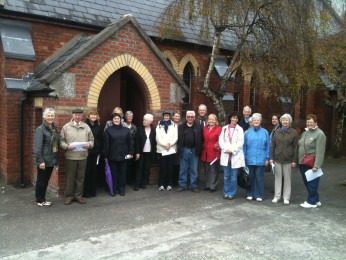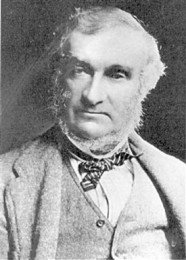Kieran’s Speech, Blackrock Community Association AGM, 13 March 2012
Madame Chairperson, members of the committee
On the 1 October 1962, the Cork Examiner ran the following key headline,
“Kennedy’s troops mass for race war showdown”.
The first paragraph of the report read:
“The First US Federal marshals began arriving at Oxford (Mississippi) Airport yesterday to enforce court orders that a 29-year negro ex-serviceman be admitted to the all-white University of Mississippi. What began as the refusal of Mississippi officials to obey court orders to admit the negro, Mr. James Meredith into the university has grown into a full trial of strength between the US government and the southern state.
It is the most serious clash between the Government of and a state of the Union since the American civil War of a hundred years ago. From various neighbouring segregationalist states have come pledges of support totalling ‘tens of thousands’ of volunteers to assist Mississippi Governor Ross Barnett.”
Many students harassed Meredith during his two semesters on campus but others accepted him. According to first-person accounts, students living in Meredith’s dorm bounced basketballs on the floor just above his room through all hours of the night. Other students ostracized him: when Meredith walked into the cafeteria for meals, the students eating would turn their backs. If Meredith sat at a table with other students, all of whom were white, the students would immediately get up and go to another table.
On the same page, another headline ran “All set for US Space Flight”.
“A huge task force of ships, aircraft and men were assembling throughout the world yesterday in preparation for Walter Schirra’s six-orbit space flight due to be launched at Cape Canaveral, Florida on Wednesday. If the flight goes off to plan, Commander Schirra will become America’s fifth spaceman and holder of the US long-distance space record.“
On October 3, 1962, Schirra became the fifth American in space, piloting a rocket on a six-orbit mission lasting 9 hours, 13 minutes, and 11 seconds. The capsule attained a velocity of 17,557 miles per hour (28,255 km/h) and an altitude of 175 statute miles (282 km), and landed within 4 miles (6.4 km) of the main Pacific Ocean recovery ship.
If anything, the 1 October 1962 showed a world of change from questions of equality to questions of ambition – new foundations of change swept across society yet again.
In headlines that showed but a weariness of change and an excitement of discovery, the headlines indirectly point out that nothing remains the same and the world keeps turning.
Caught between the main headline “US Crisis Nears Climax and “All Set for US Space Flight” was a more local story that read “Laid Foundation Stone”.
Beneath a central picture, the caption read;
“His Lordship Most Rev. Dr. Lucey, Bishop of Cork and Ross, laying the foundation stone of the new parish church of St Michael the Archangel at Blackrock, Cork. The new building will replace that destroyed by fire about eight months ago.”
On page 7 inside, a headline ran, “Redoubled Effort urged for new Cork Church”.
In a statement after the ceremony, Bishop Lucey said that:
“The blessing at Blackrock like the burning was something to remember….it is only just eight months since the old church was destroyed. In a matter almost of days the site was being cleared and plans for the new church drafted, the money for the building was being collected within and without the parish…we have a good architect for it in Mr. Boyd Barrett and I am satisfied that in line and design it will be beautiful”.
Cork’s Fold Magazine in April 1962 noted of the church:
“It had been one of the most distinguished and attractive churches in Cork for more than 130 years since 1819. It had acquired an atmosphere of intimacy and continuous devotion, which appealed greatly to visitors, as well as to the large local congregation, who have become much more numerous than its founders had ever foreseen. Its total destruction in broad daylight, within an hour of the outbreak of the fire, was a disaster that could not have been imagined. In fact the sudden conflagration quickly filled the church with such dense smoke that the firemen could not operate inside. Their efforts to play water on the roof were unavailing until it had collapsed into a blazing furnace.”

Walking around the present St Michael’s it is a beautiful building.
I like the location of the church, the way it seems to be nestled into a wooded area as seen from Montenotte.
Its high spire is reminiscent of an earlier age of architecture reaching for the heavens but also reminiscent of the new age of space rockets and reaching out beyond technology.
The lofty and colourful stained glass windows, which cast beautiful colours across the church perhaps remind one of the importance of colour.
I like the beautiful carved altar and its craftsmanship.
The location, its reaching for something higher, its colour and craftsmanship have transcended time to our time.
The church is soulful and purposeful – something motivating and ambitious. Something that has a voice. For the visitor, regular who sits on the same pew every Sunday, explorer, or geographer like me, this human built fabric creates a sacred landscape of encounters, experiences, connections, journeys, ideas and re-interpretations.
The story of this church shows us much – talent, confidence, self pride, self belief and innovation. And ladies and gentlemen, in the Ireland of today, we need more of such confidence, pride and belief and innovation– we need to mass produce these qualities and step by step approaches to pursue them.
And perhaps the idea of community is a process more than something static
But certainly the process becomes positively charged when the metronome of time veers from the weariness of change to the excitement of discovery.
I wish to congratulate you on the year gone by and your efforts and endeavours in that time. I would like to thank you for your courtesy and welcome shown to me at the summer céilí, which were great craic. Indeed anytime I appear in this community haven, I am challenged to either speak or sing or both…
I would also like to thank the people of Blackrock for their interest and support in my own community projects, the enterprise workshops, artist residency programme, the community talent competition, the make a model boat project on the Atlantic Pod, the Design A Public Park, Art Competition and the walking tour down the old Rail line, which is also now in lecture form.
My new walking tour of Blackrock I have set May leaving from Blackrock Castle and exploring the myriad of memories in this area from the 400 year castle to the fishing village, the Victorian houses, the two churches, the graveyard to name just a few.
Best of luck in the year ahead,
Go Raibh Maith Agaibh











